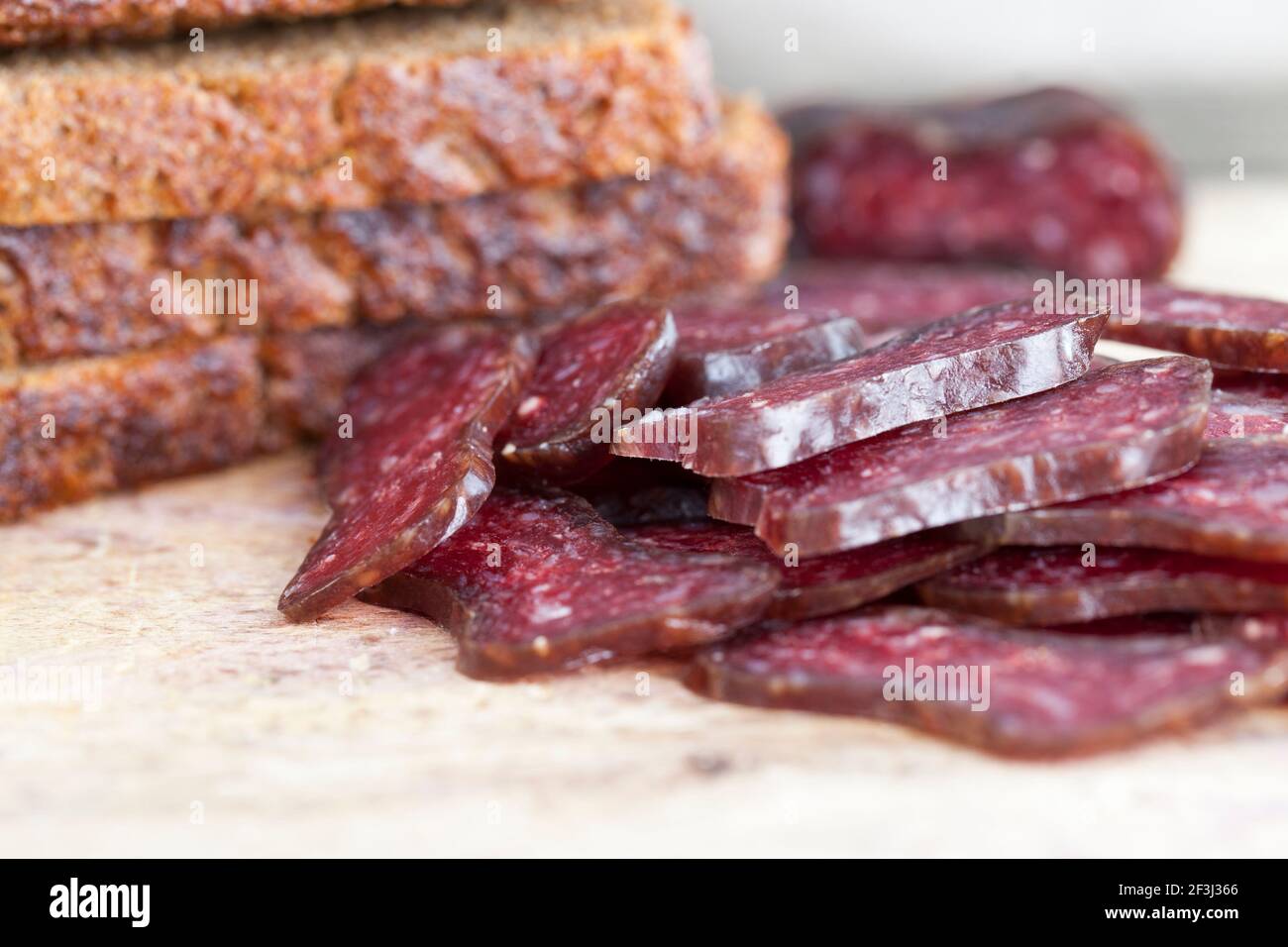You may have thought about making your own sausages more than once if you like the taste of pork. This neednt be the daunting task it seems. You don’t need casings or big grinding machines to make sausage in a number of ways that still make a tasty product. But why bother making sausages when you can buy pre-made links and patties at the store?.
First off, its cheaper. Then there’s the fact that you control what goes into your sausages when you make them yourself. It may be convenient to send your sausages to big pork processing plants, but that’s not the best way to know what goes into the food you’re eating. Getting to know a local butcher is the best way to get sausages that taste like they were made by you. These professionals are hard to find these days, so you should learn how to make your own at home.
To do this, you need to know what cuts of pork are usually used. Sausages need a decent ratio of meat to fat. Leaner cuts like tenderloin dont have enough fat, while cuts like fatback or jowl are too fatty. You want a cut that gives you enough protein for substance and enough fat to hold everything together and add flavor and juicy chunks.
Sausages are beloved worldwide for their satisfying texture and bold flavors. But crafting tasty homemade sausage depends heavily on using the right cut of pork. In this guide we’ll cover everything about choosing the ideal pork for your sausage making endeavors.
From the benefits of different cuts to proper fat content and step-by-step instructions, let’s explore how to grind and stuff professional-quality sausage at home.
Why Use Pork for Sausage?
There are several key reasons pork reigns supreme for sausages
-
Pork contains the perfect balance of fat and lean meat for ideal juicy, tender texture.
-
It has a milder flavor than beef or lamb, allowing seasoning flavors to shine through.
-
Pork is affordable and readily available.
-
Cuts like shoulder and belly contain higher fat percentages perfect for sausage making.
-
Pork sausage has strong nostalgia and tradition behind it.
The Best Cuts of Pork for Sausage
Pork Butt/Shoulder
This is the classic choice preferred by professional sausage makers and home cooks alike. Pork butt, also called Boston butt or pork shoulder, contains 20-30% fat. This makes it ideal for moist, flavorful sausage when ground.
The marbling evenly distributes fat and lubrication. Pork butt also has great binding qualities to help the sausage hold together. It’s inexpensive and provides exactly the right texture.
Pork Belly
While very fatty on its own, pork belly can be combined with leaner cuts to raise the fat percentage. It adds tons of rich, meaty pork flavor to sausage. Bacon scraps also work well.
Other Good Options
Picnic shoulder, pork fatback, and jowl are other cuts that contain plenty of fat for sausage making. Lean tenderloin can be used by adding extra fat.
Fat Content – How Much for Sausage?
The fat ratio is crucial for juicy, tender sausage texture and mouthfeel:
-
15% fat – Minimum needed to prevent dry, bland sausage.
-
20% fat – Ideal for most sausages like breakfast links and Italian.
-
25-30% fat – Best for hearty Bratwurst and spicy Chorizo. Can adjust up or down 5% to taste.
-
40% fat – Maximum before greasiness sets in. Best for heavily seasoned sausage.
The 20-30% natural fat content of pork shoulder makes it perfect for most sausages without adjustment.
Grinding and Mixing Tips
Follow these tips for the best homemade sausage texture and flavor:
-
Grind meat very cold so fat solidifies and distributes evenly.
-
Use a coarse 3/8” grinder plate for proper sausage consistency.
-
Don’t overmix – just enough to distribute seasoning for fresh sausage.
-
Use a curing salt containing nitrites for color and safety.
-
Stuff casings fully so no interior air pockets form. Twist links frequently.
Choosing a Casing
Collagen, cellulose, or natural casings can all be used successfully. Natural casings provide that satisfying “snap” when bitten into.
Step-by-Step Instructions
Here is a basic recipe and method for delicious homemade pork sausage:
Ingredients:
- 3 lbs pork butt, diced
- 1 lb pork fatback, diced
- 3 Tbsp salt
- 2 tsp black pepper
- 1 tsp curing salt
- 1/4 cup cold water
- Casings
Directions:
-
Cut pork butt and fatback into 1-inch cubes. Chill thoroughly.
-
In a large bowl, mix spices and water to form slurry.
-
Grind chilled pork through grinder using coarse 3/8” plate.
-
Add ground pork to spice slurry and mix gently to distribute seasoning.
-
Stuff mixture into hog casings, pricking air pockets. Twist off into 4-6 inch links.
-
Cook sausages to 160°F internal temperature, then air chill.
-
Refrigerate 1 week or freeze 2-3 months. Reheat before serving.
FAQs About Pork and Sausage
What’s the difference between pork butt and shoulder?
There is no difference – they refer to the same cut from the front leg.
Can other meats be used for sausage?
Yes, beef, chicken, turkey, or fish work well. Adjust fat ratio accordingly.
What equipment do I need?
A meat grinder helps, but you can also hand chop pork. A sausage stuffer makes filling casings easier.
How do I know when sausage is fully cooked?
Always cook sausage to 160°F internally before eating to kill any bacteria present.
How long does homemade sausage last?
1 week refrigerated, 2-3 months frozen. Freeze sausages layered between parchment paper.
The Takeaway
Choosing the right pork cut is vital for tender, flavorful homemade sausage. Pork shoulder with its 20-30% natural fat content is the ideal choice. Follow proper grinding, seasoning, and stuffing techniques for professional quality sausage. With the best pork cuts and the right methods, you can craft incredible sausage at home that your family will love.

